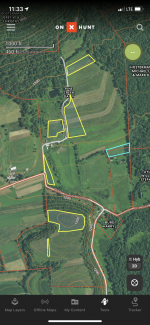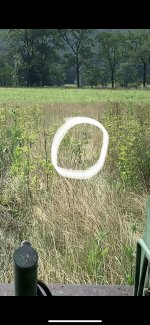FLDBRED
Well-known member
There are those that believe the wild pheasant in Pa. is extinct, this is just not the case. While the numbers are just a fraction of what they once were there are still wild populations out there.
This is from The National Wild Pheasant Recovery Plan.
PENNSYLVANIA
From 1970 to 1980, we estimated that the annual pheasant harvest was 80-85% wild pheasants statewide and 95% in primary pheasant range. The wild cock harvest exceeded 500,000 annually. The objective of the PA Pheasant Management Plan 2008-2017 is to increase the reported harvest of 43,000 wild pheasants in 2010 to a total harvest of 100,000 annually. This is to be achieved by increasing wild pheasant populations thru habitat improvement, trap and transfer of wild pheasants and elimination of releasing pen-reared pheasants in Wild Pheasant Areas. The true current estimated harvest of wild cock pheasants in 2010 was 18,000 cock birds out of a total reported harvest of 90,000 cock birds. This estimate is based on the estimat- ed number of pen reared birds released by the PGC and private sector in 2010; 180,000 cock birds and 75,000 hens. Based on research conducted in 1998, we estimated the harvest rates of pen-reared pheasants, we es- timated at 40%. for 2010, this results in a harvest of 72,000 pen-reared cocks from our estimated total har- vest 90,000 cock pheasants from the Game Take Survey. Thus, we estimated that 20% of the harvest was wild pheasants in 2010, compared to 85% from 1970 to 1980 and 45% from 1990 to 1999. The 10 year av- erage cock harvest from 1990 to 1999 was estimated at 88,000 wild birds, out of the total pheasant harvest of 192,000. At an estimated harvest of 45% wild birds and 55% pen reared birds, the model predicts a harvest of 86,524 wild cock pheasants. This is very close to the 88,000 reported harvest. When we apply this same model to 2010 data it estimates a harvest of 76,810 wild cock pheasants under existing habitat conditions in PA, which we believe is an over-estimate of the current wild pheasant harvest, but will be used for the pur- pose of this habitat model.
There is More Habitat now thanks to CREP than in 2010 when they estimated 18,000 cock birds harvested.
This is from The National Wild Pheasant Recovery Plan.
PENNSYLVANIA
From 1970 to 1980, we estimated that the annual pheasant harvest was 80-85% wild pheasants statewide and 95% in primary pheasant range. The wild cock harvest exceeded 500,000 annually. The objective of the PA Pheasant Management Plan 2008-2017 is to increase the reported harvest of 43,000 wild pheasants in 2010 to a total harvest of 100,000 annually. This is to be achieved by increasing wild pheasant populations thru habitat improvement, trap and transfer of wild pheasants and elimination of releasing pen-reared pheasants in Wild Pheasant Areas. The true current estimated harvest of wild cock pheasants in 2010 was 18,000 cock birds out of a total reported harvest of 90,000 cock birds. This estimate is based on the estimat- ed number of pen reared birds released by the PGC and private sector in 2010; 180,000 cock birds and 75,000 hens. Based on research conducted in 1998, we estimated the harvest rates of pen-reared pheasants, we es- timated at 40%. for 2010, this results in a harvest of 72,000 pen-reared cocks from our estimated total har- vest 90,000 cock pheasants from the Game Take Survey. Thus, we estimated that 20% of the harvest was wild pheasants in 2010, compared to 85% from 1970 to 1980 and 45% from 1990 to 1999. The 10 year av- erage cock harvest from 1990 to 1999 was estimated at 88,000 wild birds, out of the total pheasant harvest of 192,000. At an estimated harvest of 45% wild birds and 55% pen reared birds, the model predicts a harvest of 86,524 wild cock pheasants. This is very close to the 88,000 reported harvest. When we apply this same model to 2010 data it estimates a harvest of 76,810 wild cock pheasants under existing habitat conditions in PA, which we believe is an over-estimate of the current wild pheasant harvest, but will be used for the pur- pose of this habitat model.
There is More Habitat now thanks to CREP than in 2010 when they estimated 18,000 cock birds harvested.
Last edited:


